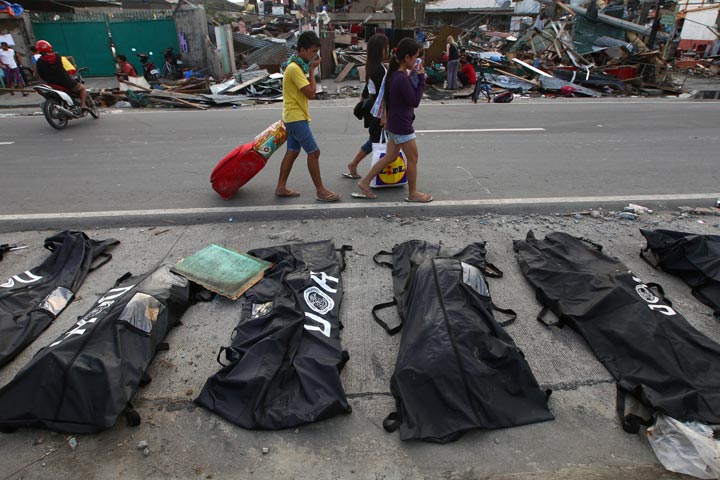MANILA, Philippines – In the chaos of natural disaster, tallying an accurate death toll is often difficult and sometimes not a priority.

The aftermath of the Philippines typhoon has been no different, where initial estimates of the dead were put by some at 10,000. President Benigno Aquino has disputed that, saying it likely to be closer to 2,000 or 2,500. An official tally showed 2,275 confirmed deaths.
READ MORE: Looting, gunfire break out in typhoon-hit city
In one sense, it matters little outside of newsrooms. Any number of dead is a tragedy, whether it be 2,000, 3,000 or 10,000. In terms of planning emergency relief operations, the amount of people needing assistance and damage to infrastructure are often more important. Over time, a final toll is tallied, or in the case of larger disasters, an estimate agreed upon.
The following factors have been attributed to the confusion in the Philippines: downed communication lines making it impossible to get up-to-date information; shattered local administrations unable to work to full capacity; villagers burying their dead immediately or bodies being sucked out to sea and not being counted.
Similar factors were cited after the 2004 Asian tsunami, where in some instances separate government departments in Indonesia were giving out significantly different figures, each unconcerned about the confusion this created.
READ MORE: 9 powerful photos from Typhoon Haiyan
On Sunday, two days after the typhoon in the Philippines, a regional police official told reporters that the death toll was estimated at 10,000, based on reports from local village chiefs collected by the governor. The same day, the mayor of Tacloban city, one of the worst-hit areas, estimated 10,000 could have died in his city alone.
The National Disaster Risk Reduction and Management Council updated its death toll Wednesday afternoon to 2,275 dead, with 80 missing. That figure is an actual body count from affected regions and has been steadily increasing.
Aquino, in an interview aired by CNN, said that figure of 10,000 feared or estimated dead, which has been widely quoted, was “too much.” He said “so far 2,000, about 2,500, is the number we are working on as far as deaths are concerned.”



Comments